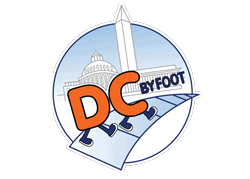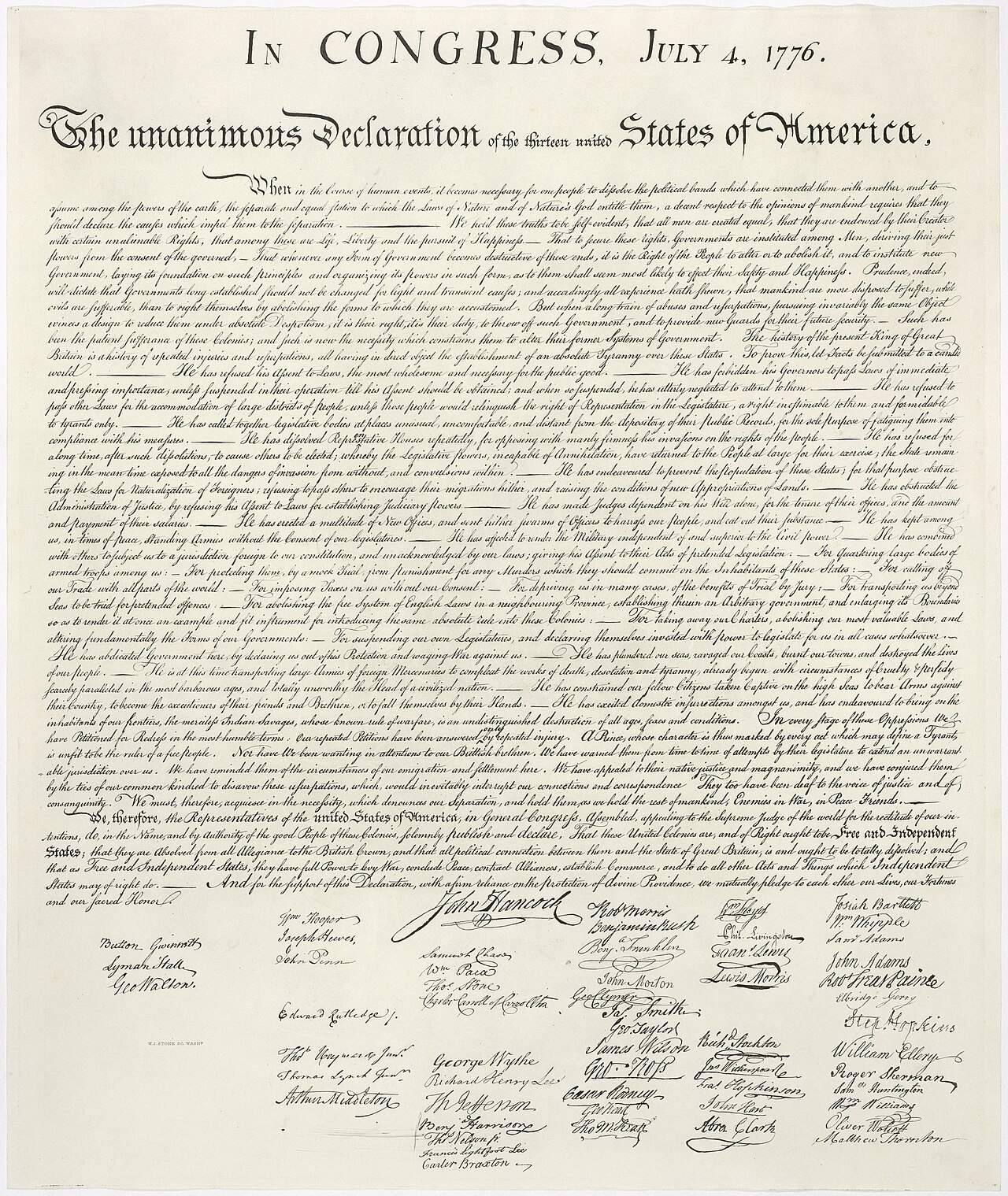There are a lot of prints of this historical document out there, but there is only one original copy. Where is the Declaration of Independence?
We’ll answer that question and many more about viewing it in this post. As a tour guide in Washington, DC for over a decade, I've taken countless guests to the National Archives. The museum holds many important documents but the Declaration of Independence is one of the main items guests want to see and understand.
My focus as a historian is to bring historical documents into a modern context. This is an essential item to start an introduction to American History.
- Where is the Declaration of Independence?
- Visitor Information
- Historical Preservation and Protection
- See the National Archives
- Tips From Locals and Travelers
Where is the Original Declaration of Independence?
Fear not, Nicolas Cage did not actually steal the Declaration of Independence as depicted in the film National Treasure and it is not located in Philadelphia.
The actual original document still resides at the National Archives in Washington DC.

The entrance can be found on Constitution Avenue between 7th Street NW and 9th Street NW.
This building is surrounded by the Department of Justice, the Federal Trade Commission, and the US Navy Memorial Plaza.
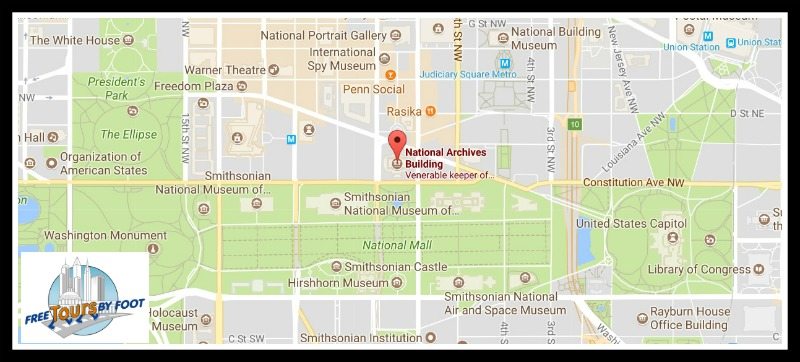
The Declaration of Independence is on the upper floor of the National Archives in the Rotunda. The Rotunda houses the Charters of Freedom.
The Charters of Freedom include the Declaration of Independence, the Constitution, which would come later to elaborate on the powers of the new government, and the Bill of Rights, a legislative act to enshrine the rights of the people in such a government.
It is entirely free to visit the National Archives, but there are a few things you may want to keep in mind before you make the trip.
Is the real Declaration of Indepence in Philadelphia?
Philadelphia is known as the birthplace of America and it’s where the Declaration of Independence was signed in 1776.
There are debates and rumors that the real Declaration of Independence might be somewhere in Philadelphia.
But, is it true?
There were many copies of the document in the late 1700s and today there are only 26 remaining copies from the original printing worldwide today.
The original printing only contained the names of John Hancock and Secretary Charles Thomson.
There is only one copy of the engrossed and signed document.
The official copy of the Declaration of Independence signed by the delegates to the Continental Congress on August 2, 1776 is on display at the National Archives.
Visit the Declaration of Independence
Although there is no admission price for the National Archives, it can get pretty busy between March and August or on holiday weekends.
On busy days, it can take up to an hour just to get into the building!
If you want to avoid the wait, you can get timed tickets which will allow you to skip most of the line.
These tickets come with a $1.50 processing fee, but that’s not much to ask to avoid a long wait.
We cover the ticketing process in our Guide to the National Archives.
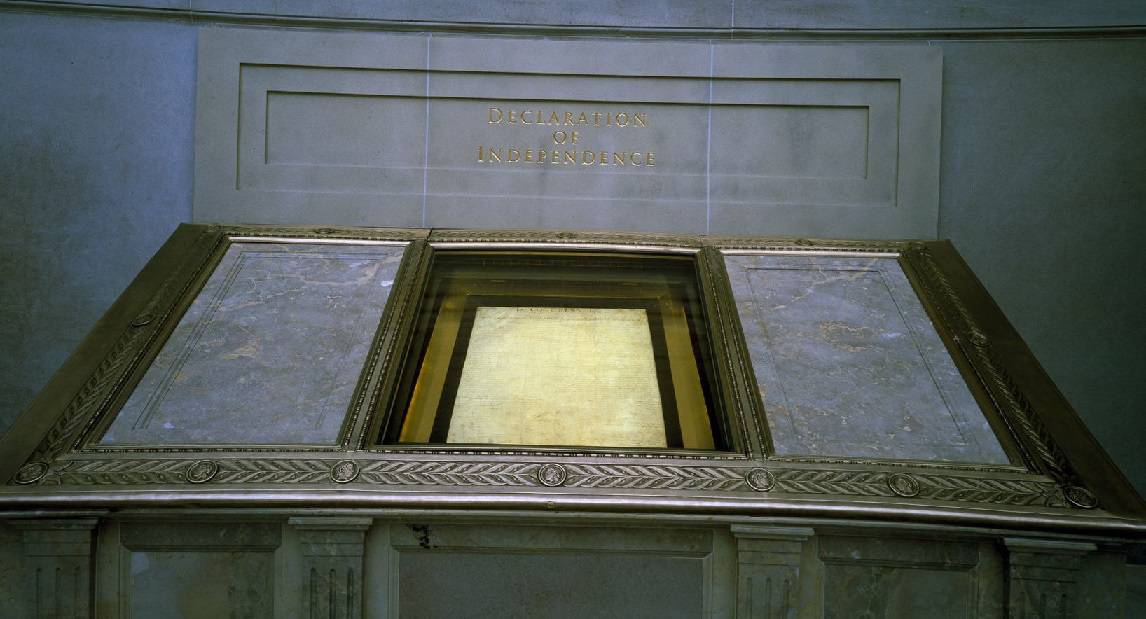
You can reserve tickets for up to 15 people. Admission is available from 10:30 am - 3:30 pm with a timed ticket.
Alternatively, you can also take a guided tour at 9:45 am from Monday - Friday. These tours are offered for free, but you must make a reservation in advance.
What is the Declaration of Independence?
The Declaration of Independence is one of the most important documents in the history of the United States.
It is one of the most visited documents in the world.
Even with its name recognition, it can be hard to understand what exactly we are declaring and why the document has such significance today.
While we often joke that it is the world’s most famous break-up letter, the document served an important role in the fight for Independence and continues to inspire us today.
It’s important to remember that before the Declaration of Independence was written, American colonists were already engaged in war with British troops.
Though some colonial leaders hoped for reconciliation with Great Britain, public support for a formal separation continued to grow into 1776.
Even with troops fighting in the field and the public calling for separation, Congress did not have clear authority to declare independence.
In June 1776, Richard Henry Lee of Virginia presented a three part resolution to Congress on behalf of the Virginia Convention.
With vigorous debate following, it was determined that there was a necessity for a document that explained the case for independence.
A Committee of Five was formed to create this document, made up of Thomas Jefferson (Virginia), Benjamin Franklin (Pennsylvania), John Adams (Massachusetts), Robert Livingston (New York), and Roger Sherman (Connecticut.)
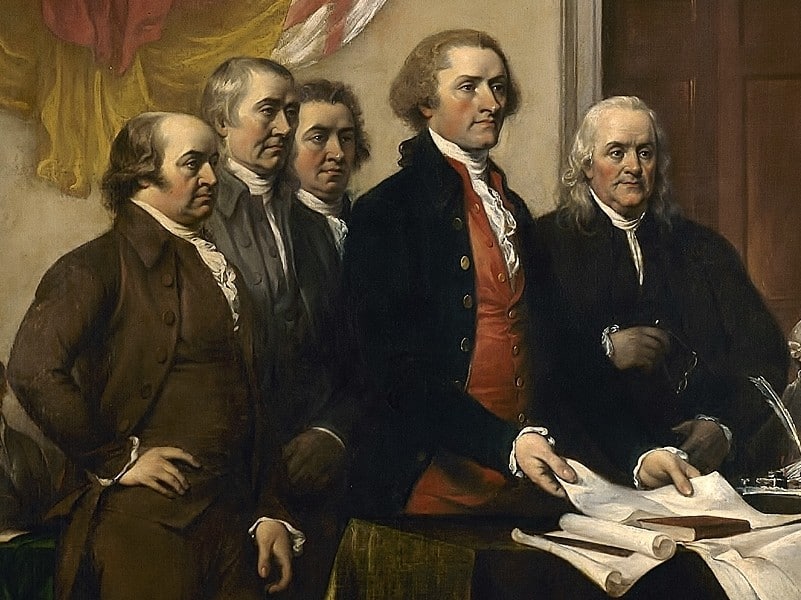
Thomas Jefferson was tasked with writing the proposed declaration and did so in just over two weeks.
The document would be debated and edited by the Continental Congress and once the resolution on independence was adopted on July 2nd, Congress approved the Declaration of Independence on July 4, 1776.
What the document does is lay out in terms so clear that they could be understood by those within the country and around the world why the colonists were seeking independence and their vision for this new nation.
It serves as an indictment of the actions of King George III and enumerates the grievances of the colonists.
Not only did the document bolster the efforts of those already fighting in the war, it would help in recruitment efforts and give the Continental Army a unifying cause to rally behind.
Additionally, it made it easier to seek foreign aid and assistance in the war as other nations could clearly understand the reasons for this separation and what to expect from this new country.
For Americans today, the Declaration of Independence holds significance because it encapsulated the political philosophy of those seeking to separate from the State of Great Britain and clearly illustrated the beliefs held by the Founders as related to natural law, inalienable rights and personal liberty.
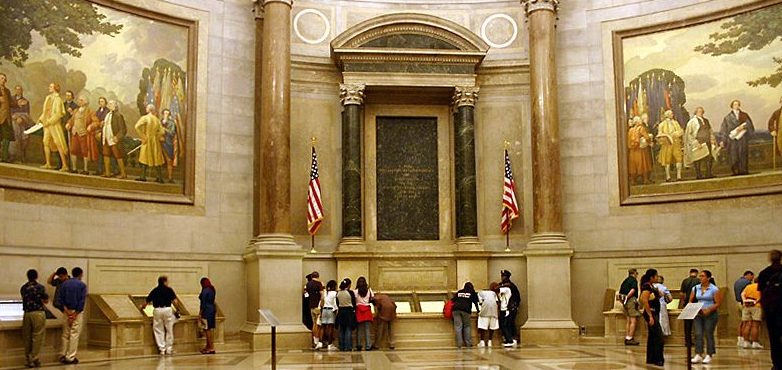
Internationally, the document has served as a template for new nations as they have crafted their own declarations of independence.
While the Declaration of Independence is not legally binding in any sense, it is still exceptionally powerful in its ability to inspire future generations, illuminate our founding principles in the right of the people, and serve as a template for human rights.
Abraham Lincoln once called it “a rebuke and a stumbling-block to tyranny and oppression” - we see that truth in the way the document inspires people around the world to fight for freedom and equality.
How long is the Declaration of Independence?
The full text of the Declaration is short, and if you visit the National Archives to see it, you'll notice it is on one broadsheet page.
The most famous are the first two paragraphs.
"When, in the course of human events, it becomes necessary for one people to dissolve the political bands which have connected them with another, and to assume, among the powers of the earth, the separate and equal station to which the laws of nature and of nature's God entitle them, a decent respect to the opinions of mankind requires that they should declare the causes which impel them to the separation.
We hold these truths to be self-evident, that all men are created equal, that they are endowed, by their Creator, with certain unalienable rights, that among these are life, liberty, and the pursuit of happiness."
Who Signed the Declaration of Independence?
While many think of George Washington when discussing the Revolutionary War, he had no political connection to the Declaration of Independence.
The first shots of the Revolutionary War were fired more than a year before the document that severed allegiance.
General George Washington gathered the Continental Army in New York City to read the petition to them, stating that Congress had "dissolved the connection" between "this country" and Great Britain and declared the "United Colonies of North America" to be "free and independent states" of the British Crown.
The most famous signature is John Hancock. Hancock was President of the Constitutional Congress that drafted the document and thus has both the first and largest signature.
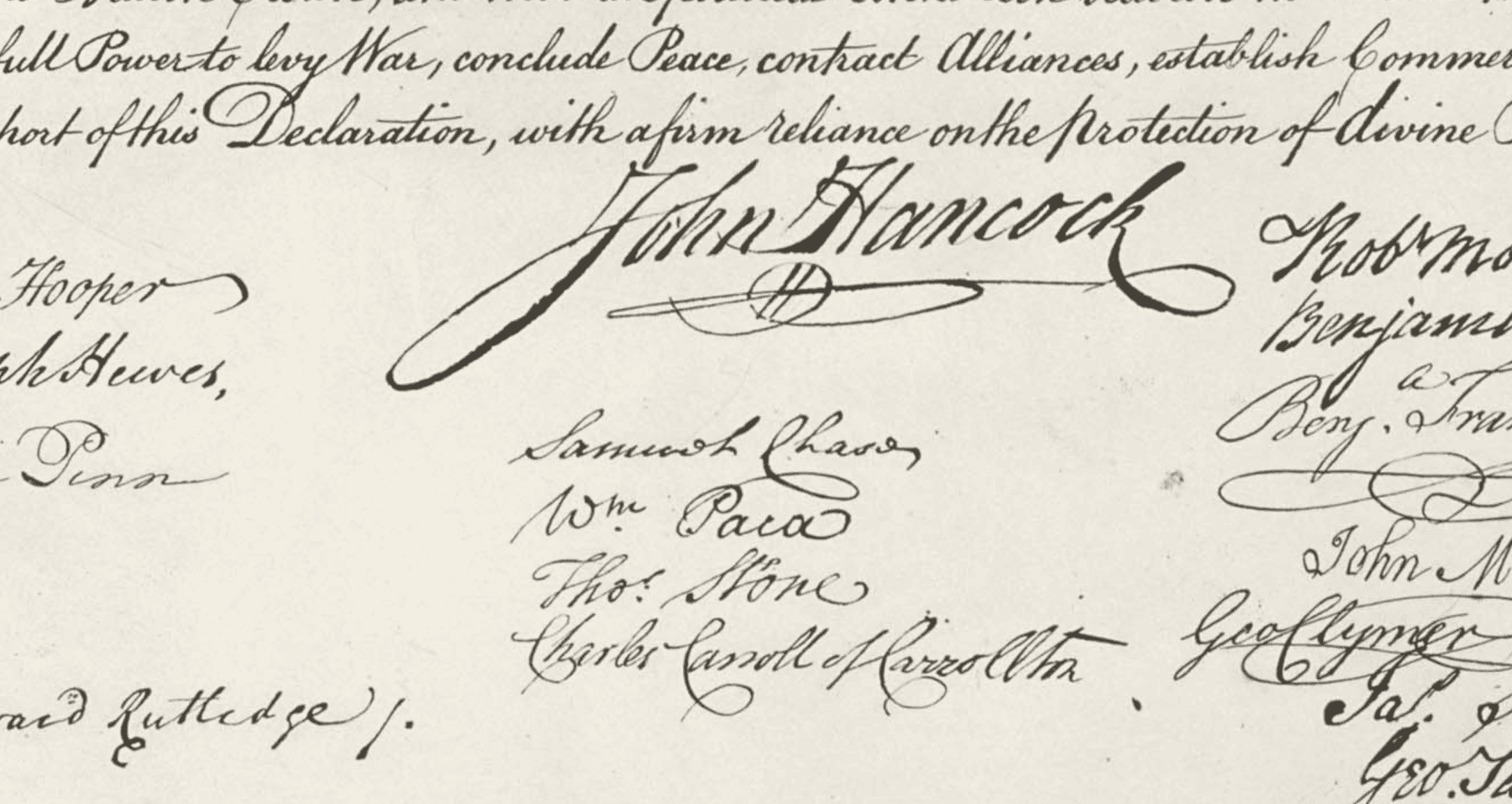
Below Hancock, the remaining signatures are arranged by States.
In all, there are 56 signers of the Declaration of Independence.
While the final draft was approved on July 4, most historians believe it was not signed on that date and in fact took nearly a month to gather all the signatures.
Historical Preservation and Protection
When it comes to security, it is important to keep in mind that photography is prohibited inside the National Archives.
If you want to avoid any trouble getting inside, come with as few items as possible.
As for how they maintain the integrity of these historical documents, their location within a rotunda is actually more than just ornamental.
The Rotunda in the National Archives is kept cold and dark, the reason being that light can cause the ink to fade and it can destroy parchment/paper, especially from a fragile document that is hundreds of years old.
Likewise, one of the reasons photography is not allowed is because the light from camera flashes could damage these documents.
We didn’t always understand this, and for a long time, the Declaration of Independence was kept near a window in the Patent Office Building.
Sunlight from the window would creep in each day, and over many years this caused the ink on this document to fade, which is why it’s much more difficult to read today than it was in the past.
Today, the Declaration of Independence, as with the Constitution and the Bill of Rights, is kept in housing designed to prevent any future degradation.
Tips From Locals and Travelers
Our nearly 60K member strong Facebook Group, Washington DC Travel Tips, has discussed viewing Declaration of Independence as an important moment on their visit to DC.

It can be a moving moment to stand in front of the original documents that shaped the United States and the National Archives in Washington DC is the only place you can do it.
And since its the only place you can do that, it can get crowded. Especially with school tours!
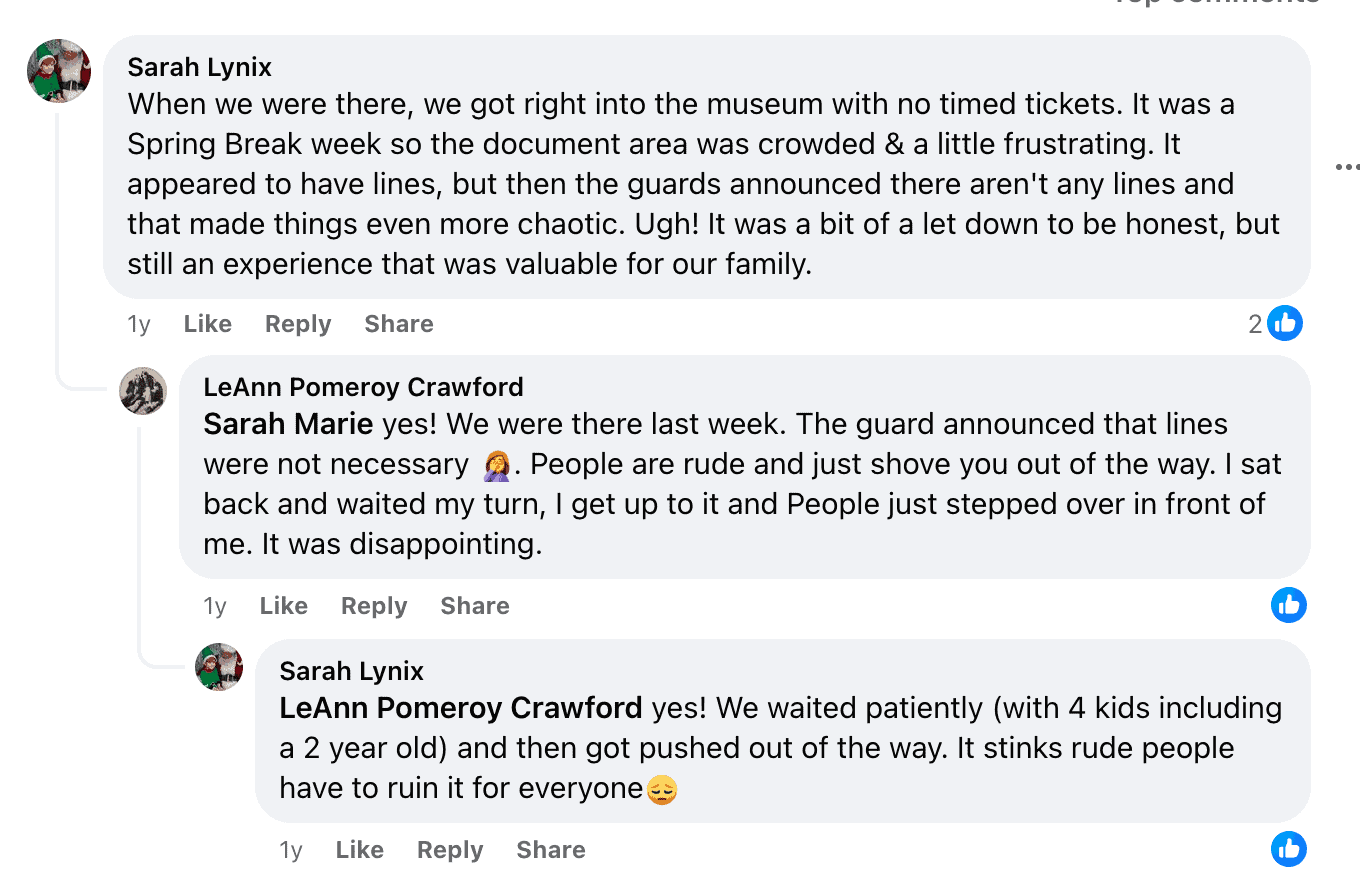
If you want to avoid school groups, travel outside of March-early April (Spring Break season) and end of the school year time frame in June.
You'll also see the school groups are here briefly. You can enjoy one of the other exhibits while you wait for any large groups you see to move on. When I bring large school groups to the Archives, we're usually only in the Rotunda for 10-15 minutes!
